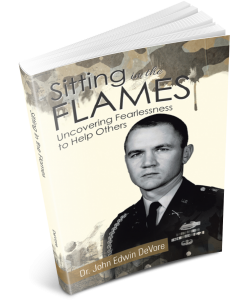SELF-RESTRAINT
In 1999 the self-awareness journey took the author to downtown Denver and the Tattered Cover bookstore, near Coors Field, home of the Colorado Rockies. The search was to uncover a connection between the body and the mind. Having recently read Sacred Hoops by Phil Jackson, Way of the Peaceful Warrior by Dan Millman and The Warrior Within by Bruce Lee, the mystery of the Tattered Cover bookshelves seemed to have awaited literature that would gallantly reveal the secrets of the mind-body connection.
Wandering to the Buddhist literature offered The Art Happiness by His Holiness The Dalai Lama. This book was to unfold a fruitful journey to Naropa University, three years of Tibetan Buddhist meditation training, study of the five Wisdom Traditions, Study Abroad in Sikkim India and, thanks to son Doug and wife Cindy, a renewed connection to the game of golf with a necessary learned skill of self-restraint. As this perfectionist golfer came to realize, two shanks into a lake on the right of a fairway can quickly mess with the golfer’s monkey mind and put it on the verge of insanity.
In Beyond Religion: Ethics for a Whole New World (2011, NY, NY: Houghton, Mifflin, Harcourt, 130-34), the Dalai Lama offers,
…it is helpful to consider the onset of destructive emotion as a kind of causal chain, which starts with an external stimulus and ends with our behavioral response. The aim of emotional awareness is to bring our attention or mindfulness into this split-second process, and thereby to gain control over it.
This split-second process—a series of actions or steps taken to achieve a particular end—is like a speeding train with five cars:
1) A trigger-stimulus: a shanked golf ball goes into the lake on the right of the fairway.
2) Perception of the stimulus: we see the golf ball flying toward the lake; and we see and hear the ball plopping into the water leaving a nice circular ripple.
3) Interpretation: less than a millisecond later, arising in the mind is the exaggerated judgment that the golfer stupidly shanked the shot into the lake.
4) Emotional response: quickly followed by anger, annoyance, or irritation, the inner cauldron is beginning to bubble.
5) Behavioral response: very quickly, we say something, or do something in retaliation…nasty words, a club slammed into the ground, a thrown club.
Once the golfer understands this causal chain, the challenge is to interrupt its flow, catch the self, and bring awareness to the process evolving the skill of self-restraint. The Dalai Lama offers,
…it is easiest to start near the end-between the emotional reaction and its behavioral expression. Then, as we become more familiar with the process and our emotional awareness develops over time, we can work our way back along the causal chain, with the ultimate goal of quelling or eliminating the afflictive emotion altogether. (132)
Give it a try! It is such a thrill to catch oneself before the irritation ruins the hole, a relationship or the round. Self-restraint can be like a 15th club in the golf bag. Stop what you are doing. Breathe. Be. Acknowledge the reflection-trigger-stimulus; and respond instead of reacting. It just feels better! And the next shot is much easier and more fun. Self-restraint is a wonderful, learned skill.


